Julius Evola
Otto Rahn y la Búsqueda Nazi por el Secreto de los Cátaros
La Berlin de entreguerras era una ciudad conocida en toda Europa por su sub-cultura bohemia y sus jovenes intelectuales. Entre los personajes que ardientemente celebraban los abundantes «ismos» que estaban fracturando las viejas certezas ideologicas, las cuales habian compactado el siglo XIX, pocos individuos eran mas coloridos que un joven de ojos verdes y cabellos oscuros llamado Otto Rahn. Su figura delgada, envuelta en un caracteristico abrigo negro y sombrero tiroles, arrojaba una larga sombra desde esos anos sombrios, una «gran silueta» alrededor de la cual se han acumulado los mitos mas extravagantes. El fue considerado igualmente como mason, rosacruz, luciferino, y un agente de la Sociedad Thule. Como lo plantea el autor Phillip Kerr, los contemporaneos de Rahn no se habrian sorprendido de ver «la Dama Escarlata y la Gran Bestia salir volando desde la puerta del frente» de su apartamento en Tiergartenstrasse. Uno de sus companeros de la Orden Negra de Heinrich Himmler comento en un memorandum interno que el «medio sospechaba que Rahn tenia relaciones con el pueblo pequeno».
Н. Гудрик-Кларк Оккультные корни нацизма. Тайные арийские культы и их влияние на нацистскую идеологию.
Глава 14 КАРЛ МАРИЯ ВИЛИГУТ ЛИЧНЫЙ МАГ ГЕНРИХА ГИММЛЕРА
Арманисты, ариософисты и рунические оккультисты, с которыми мы встретились до сих пор, обладали в той иной степени стереотипным мировоззрением. В их доктринах шла речь о возвышенных и сверхчеловеческих предках, чей древний гностический закон нес арийцам мудрость, власть и благополучие, пока не был вытеснен чуждыми и враждебными культурами. Предполагалось, что эти предшественники скрывали свое венценосное знание в таинственных формах (рунах, мифах, традиций) и оно могло быть расшифровано только их духовными наследниками, которыми и являлись современные ариософы. Лист, Ланц фон Либенфельс, Горслебен и другие выдающиеся ученики гностической сокровищницы одушевляли собой жизнь секты, некоторые из их идей или символов могли проникнуть в более широкое социаль ное окружение. Таким образом, эти люди, конечно, влияли на общее мифотворческое настроение нацистской эры, но нельзя сказать, что они прямо определяли пос тупки тех, кто занимал ответственные посты и был наделен реальной политической властью и ответствен ностью.
Жизнь Тайного короля Германии
Фигура Вилигута бесконечно туманна. Никому не известный в начале XX века в Австрии, в 30-х он публиковал свои идеи лишь в мелких журналах, а уже в 1933 году вошёл в SS Гиммлера, где занимался написанием приватных докладов своему начальнику. Из-за скудных сведений сложно точно оценить его роль и степень влияния на оккультную культуру Германии начала XX столетия.
Ранний период
(1866-1919)
К тому времени, как роль Вилигута стала значимой в истории оккультизма центральной Европы, он уже достиг зрелых лет. Свою первую книгу, «Seyfrieds Runen» («Зайфридские руны») он опубликовал в возрасте 37 лет, в чине капитана австрийской армии.
The wooden book of Montségur
In the early 20th century, a series of palm leaves, containing anomalous writing, were apparently discovered within a hidden cache of the walls of the Cathar castle of Montségur. Though without any intrinsic value, the “wooden book” – as it became known – would become the centrepiece of the esoteric and metaphysical community; its discoverers even labelled it “the Oracle” and said it was able to contact the hidden masters of Agharta.
Montségur is seen as the final stronghold of the Cathar faith, a bastion of true devotion besieged by the worldly ambitions of the papal troops. In March 1244, the Cathars that had been locked inside the castle for months finally surrendered; approximately 220 were burned en masse in a bonfire at the foot of the pog when they refused to renounce their convictions.
A review of Otto Rahn’s Lucifer’s Court by John J. Reilly
This book and its companion volume, Crusade against the Grail, are about as close as we can get to an “authoritative” statement of the esoteric dimension of the Nazi regime in Germany. The publication of the Crusade book in 1933 persuaded SS leader Heinrich Himmler to invite its author, Otto Rahn (1904-1939), to work for the SS as a folklorist. As the book under review here also does in part, that work developed the thesis that the doctrines of the medieval Cathars of Provence were encoded into Parzival, Wolfram von Eschenbach’s 13th-century version of the Grail legend. Rahn later became a member of the Ahnenerbe (“ancestral heritage”) bureau of the SS, in whose employ he finished Lucifer’s Court.
The Holy Grail: Imagination and Belief
At the climax of the French prose romance, The Quest of the Holy Grail, Sir Galahad looks into the dish that was the object of the long and perilous search by himself and his companions, Sir Perceval and Sir Bors. This is his report:
For now I see openly what tongue cannot describe nor heart conceive. Here I see the beginning of great daring and the prime cause of prowess; here I see the marvel of all other marvels.
Отто Ран и поиски Святого Грааля
Отто Ран (1904-1938 гг.), о котором говорили как о талантливом молодом литераторе и историке, был одной из действительно ярких личностей этого века. До своей загадочной смерти в возрасте 35 лет он успел написать две книги о катарах южной Франции: "Крестовый поход против Грааля" ("Kreuzzug gegen den Gral") и "Двор Люцифера" ("Luzifers Hofgesind"). О его жизни и трагической смерти ходят легенды. Хотя его книги оказали влияние на таких известных русскому читателю авторов как Тревор Равенскрофт (Trevor Ravenscroft) и Жан-Мишель Анжебер (Jean-Michel Angebert), на русский язык они никогда не переводились. В бестселлере 1982 года "Святая кровь, святой Грааль" (Holy Blood, Holy Grail - в русском переводе "Священная загадка") имя Отто Рана упоминается в небольшом, но интригующем примечании.
Otto Rahn and the Quest for the Holy Grail
Otto Rahn (1904-1938), described as a gifted young author and historian, was one of this century's truly fascinating figures. Prior to his mysterious death, at age 35, he wrote two books about the Cathars of southern France: *Kreuzzug gegen den Gral* ("Crusade Against the Grail") and *Luzifers Hofgesinf* ("Lucifer's Court"). Legends continue to surround both his life and tragic death. While his books influenced such authors as Trevor Ravenscroft and Jean-Michel Angebert, they were never translated into English. In the 1982 best selling book *Holy Blood, Holy Grail*, Otto Rahn's name appears in a small but intriguing footnote. Otto Rahn believed that he had found the location of the Holy Grail Mountain, the Montsalvat of legend, in the Cathar mountain fortress of Montsegur in the French Pyrenees. He was, says Prof. Joscelyn Godwin, "largely responsible for the mythological complex that associated the Cathars and Montsegur with the Holy Grail and its Castle."
Norma Lorre Goodrich in her own highly acclaimed work *The Holy Grail* pays tribute to Otto Rahn's "Crusade Against the Grail" describing it as "a wonderful book, a monument to this German idealist author, who died mysteriously during a descent in the Alps."
Raiders of the Lost Grail
Berlin between the wars was a city known throughout Europe for its bohemian subculture of young intellectuals. Amongst the personalities who hotly debated the many modernist “isms” that were fracturing the old ideological certainties which had glued together the 19th century, few individuals were more colourful than a dark-haired, green-eyed young man named Otto Wilhelm Rahn. His gaunt figure, swathed in characteristic black coat and fedora, casts a long shadow out of those twilight years, a ‘great silhouette’ around which the most extravagant myths accrued. He was variously said to be a Mason, a Rosicrucian, a Luciferian, an agent of the Thule Gesellschaft, an initiated Cathar and even the leader of an obscure, international secret society. As author Philip Kerr puts it, Rahn’s contemporaries might not have been surprised to see “the Scarlet Woman and the Great Beast come flying out of the front door” of his apartment on Tiergartenstrasse. One of his Nazi peers in Heinrich Himmler’s Black Order remarked in an internal memo that he “half suspected Rahn of being in league with the little people”. To this day, it is widely believed that this enigmatic young man knew the whereabouts of one of the most sacred relics in all Christendom – the Most High Holy Grail. But the truth is stranger still…



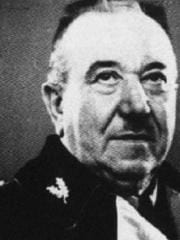
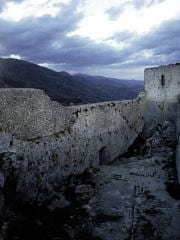
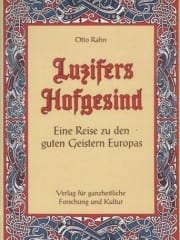
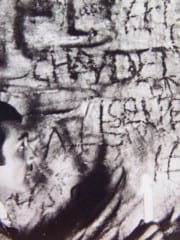
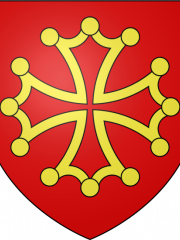
Recent comments
13 years 44 weeks ago
13 years 44 weeks ago
13 years 44 weeks ago
13 years 45 weeks ago
13 years 48 weeks ago
14 years 1 week ago